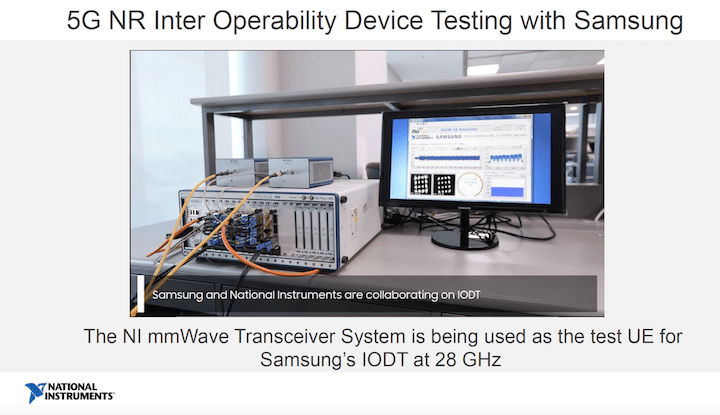Some people have both a front-row seat and a behind-the-scenes view of the launch of 5G. The test and engineering tool company National Instruments is one of them. Particularly Sarah Yost, a senior solutions marketer for 5G at National Instruments.
Not only is her team involved in setting the standards with 3GPP, they do some of the research and early testing using the standards. “I feel our voice is well represented,” in the 3GPP standards process, said Yost in an interview with RCR Wireless News.
“It helps a lot [to be so connected to the standards process]when we look at our product roadmap and develop this,” Yost added.
NI does 5G research and advanced wireless research, in general. “Our main goal is to look at the most challenging applications in wireless research, where there is not an off-the-shelf solution that can tackle that.” NI finds partners — they call them lead users — and work with them on co-developing a system that meets their needs and solves that solution.
For example, NI worked with Nokia over multiple years on a millimeter wave communication system using 2 GHz bandwidth at millimeter wave. NI and Nokia developed a new hardware platform and also co-developed a lot of IT with Nokia, which became the basis for NI’s millimeter wave 5G testing software.
That was the beginning of NI’s millimeter wave 5G software. “We took that reference design that we worked on with Nokia and as the standards become more evolved and solidified, we have been following those updates on the standards and modifying our code and solidifying it as well.” Yost said.
NI opened this 5G software platform to other researchers who needed a platform on which to try their ideas out. Because 5G cell phones aren’t available, NI also created a work around. The company uses its software defined radios (SDNs) in the research to represent the 5G device. For all the lab-based research, “we have programmed our software defined radio to be 5G radio handsets,” explained Yost.
At Mobile World Congress in 2018, the NI and Samsung had a carrier interoperability test demo. NI’s SDN was programmed to be a 5G handset that was able to interact with Samsung’s commercial 5G base station at 28 GHz. “We were able to do full testing to make sure that base station operates as they think it does,” said Yost.

5G NR NI Interoperability device testing with Samsung. (Courtesy of National Instruments)
“These companies are starting off and they get these incredibly long documents and specs,” Yost said. NI gets the same specs too and has to interpret them. The goal of the interoperability tests is to make sure that the NI and base station providers interpret the specs the same way.
Some of the testing is not as daunting as you would think. “We figured a lot of these problems before. They are not necessarily as new as people make them out to be. The military and aerospace industry in general has been doing these for a long time,” said Yost. She used the example of a 4,000 element transceiver that has been tested before.
The harder stuff comes in “for any technology that is sub 6.”
The post NI creates the missing 5G handset for 5G testing appeared first on RCR Wireless News.
